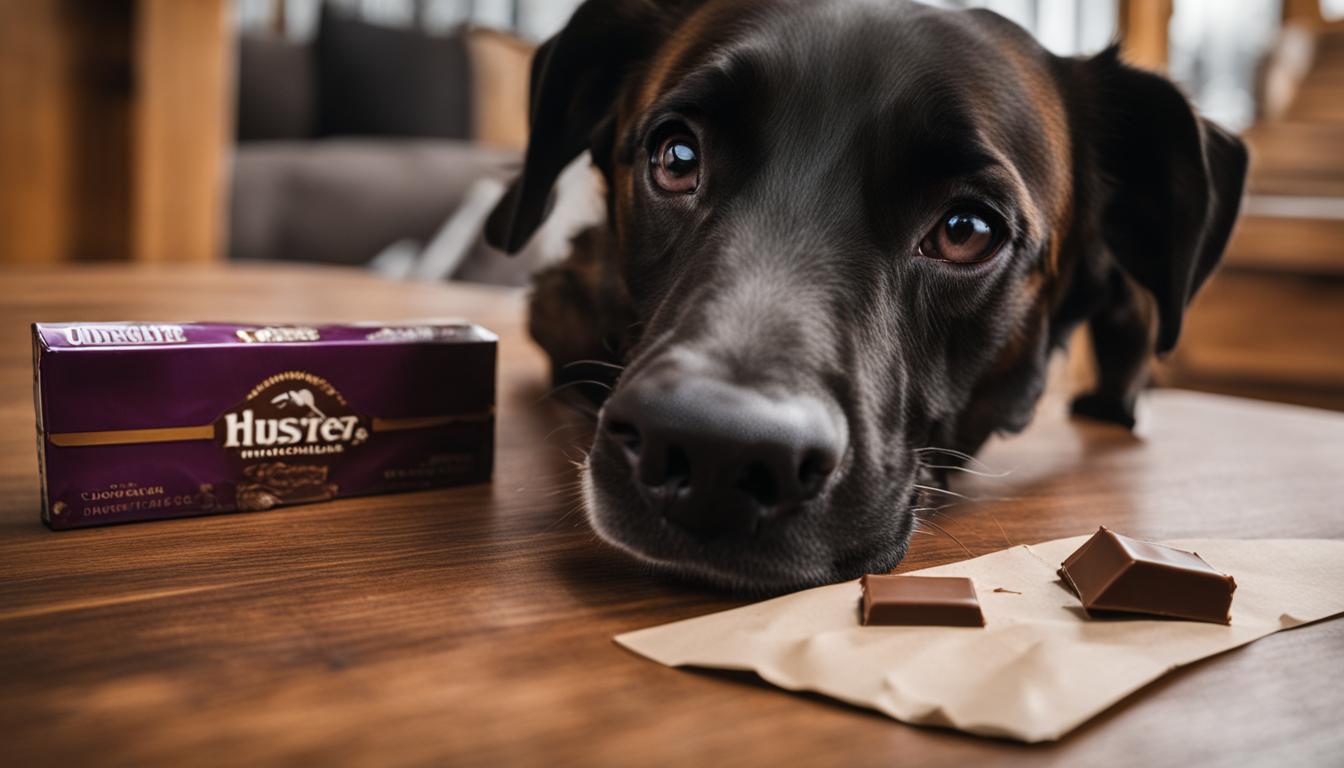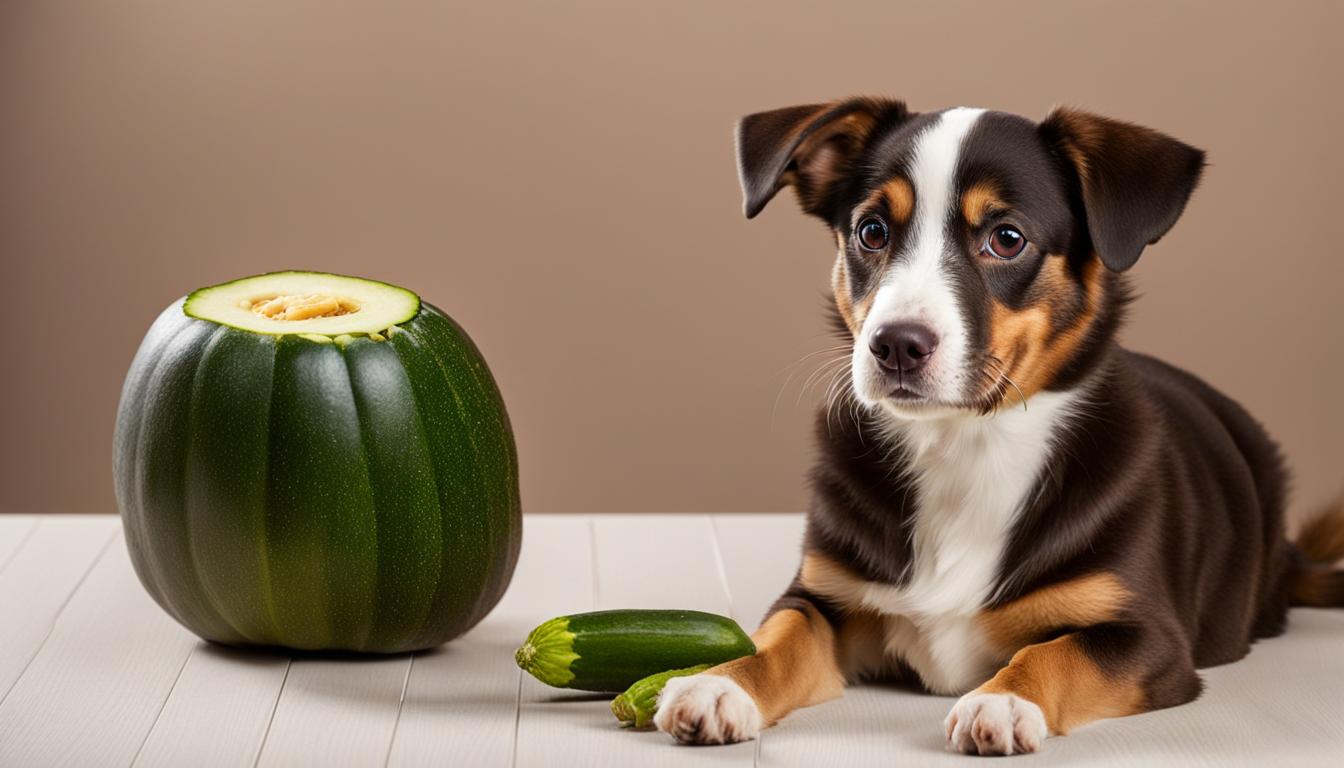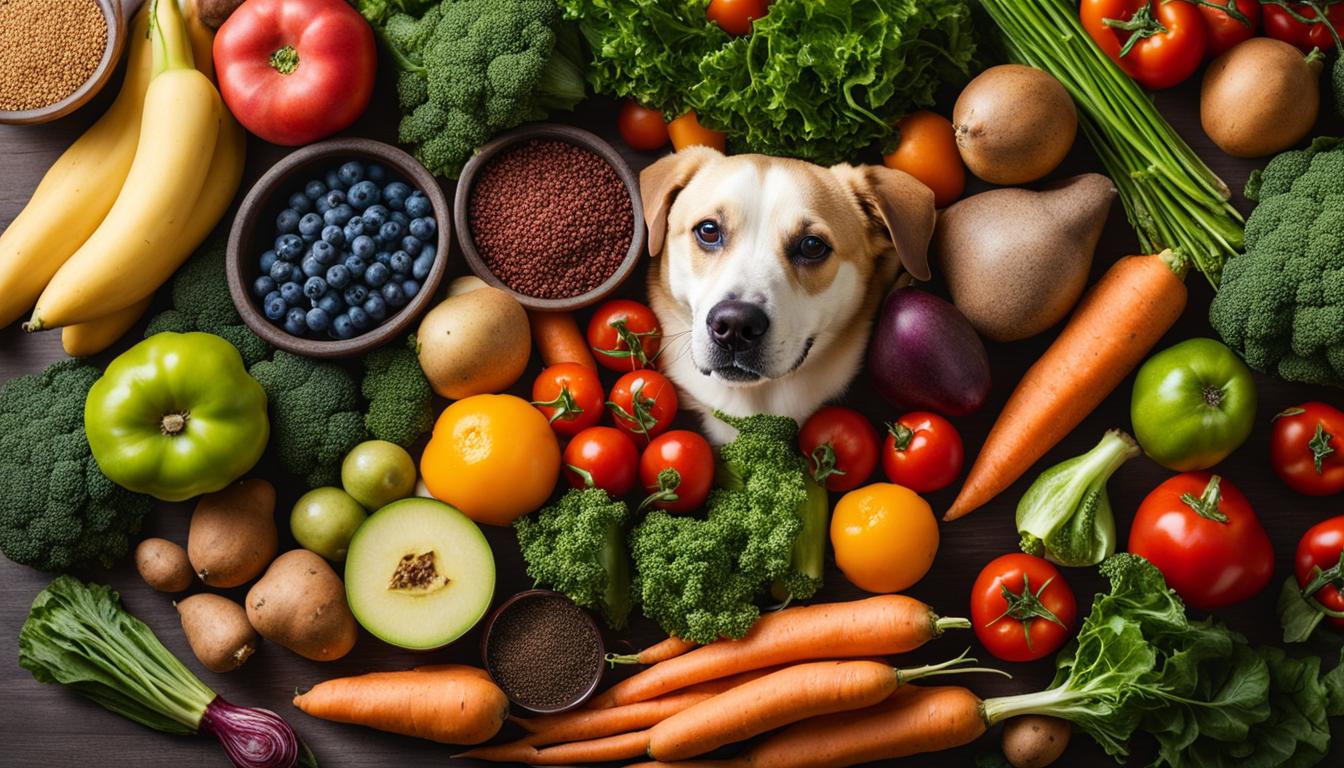Do you ever find it hard to resist those puppy-dog eyes begging for a bite of your chocolate treat? While it may be tempting to share, it’s important to know that chocolate can be extremely dangerous for your furry friend. Chocolate toxicity is a serious concern for dogs, and understanding the risks involved can help keep them safe.
Takeaways>
How Much Chocolate is Poisonous to a Dog?
When it comes to chocolate toxicity in dogs, it’s important to understand the levels at which chocolate becomes dangerous. The toxicity of chocolate is primarily due to the presence of theobromine, a stimulant that affects the central nervous system and cardiovascular system of dogs. The amount of theobromine in chocolate varies depending on the type, with darker chocolates containing higher levels than milk or white chocolate.
To give you an idea of the toxicity levels, baking chocolate and gourmet dark chocolate have the highest concentrations of theobromine, with 130-450 mg per ounce, while milk chocolate contains about 44-58 mg per ounce. Surprisingly, white chocolate has the lowest theobromine content, with only 0.25 mg per ounce. Despite the lower theobromine levels, dogs can still become ill from the fat and sugar in chocolate, even if the theobromine content is not toxic.
To put it into perspective, a medium-sized dog weighing 50 pounds would only need to consume 1 ounce of baking chocolate or 9 ounces of milk chocolate to potentially show signs of poisoning. Small amounts of milk chocolate are generally not harmful to most dogs, but it’s always best to err on the side of caution and avoid giving any form of chocolate to your furry friend.
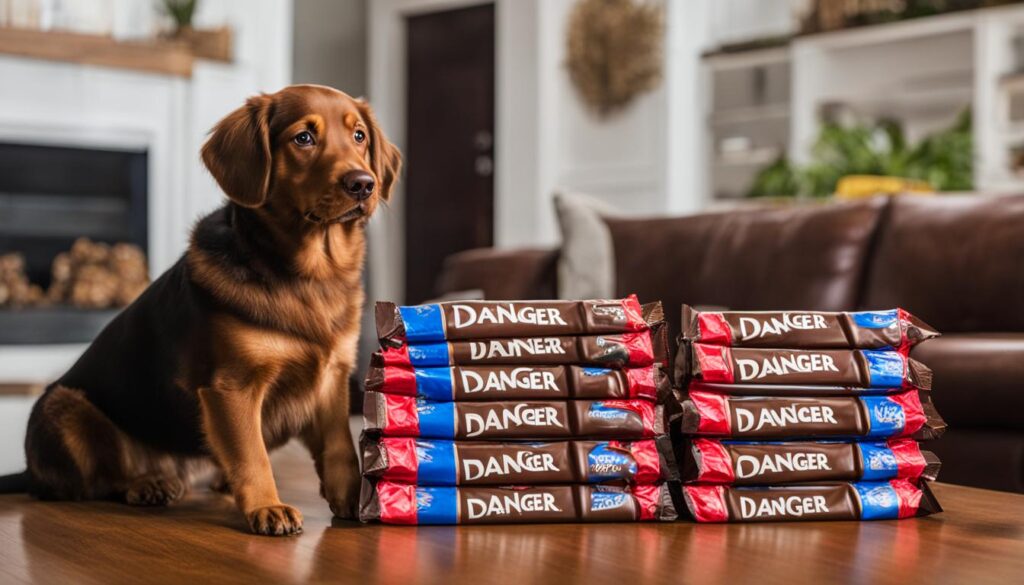
The Effects of Dark Chocolate on Dogs
Dark chocolate, with its higher levels of theobromine, poses a greater risk to dogs compared to milk or white chocolate. Dogs metabolize theobromine more slowly than humans, making it difficult for their bodies to eliminate this stimulant. As a result, theobromine can build up to toxic levels in a dog’s system, leading to various symptoms of chocolate poisoning.
“Dark chocolate can contain up to 10 times more theobromine than milk chocolate, making it a significant threat to our four-legged friends,”
The effects of dark chocolate on dogs can range from mild to severe, depending on the amount ingested and the size of the dog. Common symptoms include vomiting, diarrhea, increased thirst, panting, excessive urination, and a racing heart rate. In more severe cases, dogs may experience muscle tremors, seizures, and even heart failure. The key is to seek immediate veterinary treatment if your dog has ingested a poisonous amount of chocolate.
Clinical Signs of Chocolate Poisoning in Dogs
When it comes to chocolate poisoning in dogs, recognizing the clinical signs is crucial for early detection and prompt treatment. The symptoms can vary depending on the amount and type of chocolate ingested. Being aware of these signs can help you take immediate action and prevent further complications.
The most common symptoms of chocolate poisoning in dogs include vomiting, diarrhea, increased thirst, panting or restlessness, excessive urination, and a racing heart rate. These signs may appear within a few hours after ingestion and can last for several days in severe cases. Dogs that have consumed a significant amount of chocolate may also experience muscle tremors, seizures, and even heart failure.
It is important to note that the severity of symptoms depends on the amount of theobromine and caffeine present in the chocolate. Darker chocolates, such as baking chocolate and gourmet dark chocolate, have higher concentrations of these toxins compared to milk chocolate or white chocolate. Even small amounts of certain chocolates can be toxic to dogs, especially if they are of a smaller breed or have underlying health conditions.
| Type of Chocolate | Theobromine Content (mg/ounce) |
|---|---|
| Baking Chocolate | 130-450 |
| Gourmet Dark Chocolate | 130-450 |
| Milk Chocolate | 44-58 |
| White Chocolate | 0.25 |
If you suspect that your dog has ingested a poisonous amount of chocolate, it is essential to seek immediate veterinary treatment. Contact your veterinarian or a pet poison helpline for professional guidance on how to proceed. Remember, early intervention can greatly improve the chances of a positive outcome for your furry friend.
Emergency Treatment for Chocolate Ingestion
In the unfortunate event that your dog ingests chocolate, it is crucial to take immediate action to prevent further harm. The first step is to contact a veterinarian or pet poison helpline for guidance tailored to your specific situation. They will assess the severity of the chocolate toxicity and provide instructions for emergency treatment.
One common method used to address chocolate ingestion is to induce vomiting. This is typically done within two hours of ingestion, as theobromine (the toxic compound in chocolate) is absorbed into the bloodstream relatively quickly. Your veterinarian may recommend administering hydrogen peroxide or another vomiting-inducing agent to safely remove the chocolate from your dog’s stomach.
It is important to note that inducing vomiting should only be done under the guidance of a veterinarian, as certain factors such as the amount and type of chocolate consumed, as well as your dog’s individual health status, must be taken into consideration.
In some cases, especially if it has been more than two hours since ingestion, inducing vomiting may not be effective or recommended. In such instances, your veterinarian may suggest administering activated charcoal to prevent further absorption of theobromine into the bloodstream. Activated charcoal works by binding to the toxic substances in the gastrointestinal tract, reducing their absorption into the body.
Remember, it is essential to seek professional advice before attempting any form of treatment at home. Only a veterinarian can accurately assess the situation and provide the most appropriate course of action.
| Type of Chocolate | Theobromine Content (mg/ounce) |
|---|---|
| Baking Chocolate | 130-450 |
| Gourmet Dark Chocolate | 130-450 |
| Milk Chocolate | 44-58 |
| White Chocolate | 0.25 |
Table: Theobromine Content in Different Types of Chocolate
Dog-Safe Chocolate Alternatives
If you want to treat your furry friend to something sweet but safe, there are several dog-friendly alternatives to chocolate that you can consider. One such alternative is carob, which is often used as a substitute for chocolate in dog treats. Carob looks similar to chocolate, but it contains very little theobromine, making it a safer choice for dogs.

In addition to carob, there are gourmet dog treats available in the market that are specially formulated to be safe and delicious for your pet. These treats are made with ingredients that are safe for dogs to consume, ensuring that they can enjoy a tasty snack without any risk of chocolate toxicity. Gourmet dog treats come in a variety of flavors and textures, providing a wide selection for you to choose from.
When selecting dog treats, it’s always important to read the ingredient list carefully and choose products that are specifically labeled as safe for dogs. Avoid giving your dog any form of chocolate, including cocoa powder or dark chocolate, as these can be dangerous to their health. By choosing dog-safe chocolate alternatives, you can indulge your furry friend without worrying about the potential risks of chocolate toxicity.
The Benefits of Dog-Safe Chocolate Alternatives:
- Safe for dogs to consume
- Available in a variety of flavors and textures
- Can be enjoyed as a tasty and safe snack
- Made with ingredients that are dog-friendly
- Avoids the risk of chocolate toxicity
Table: Comparison of Dog-Safe Chocolate Alternatives
Prevention and Safety Tips
When it comes to chocolate and puppies, prevention is key to ensuring their safety. Here are some important tips to help you prevent chocolate toxicity in dogs:
1. Keep chocolate out of reach:
Chocolate should be stored in secure containers or cabinets that your puppy cannot access. Dogs have a keen sense of smell and can be attracted to the scent of chocolate, so be cautious when consuming chocolate around your furry friend. Remember, prevention is always better than treatment.
2. Educate yourself and others:
It’s crucial to educate yourself and others about the dangers of chocolate for dogs. Share this information with family members, friends, and anyone who may come into contact with your puppy. Awareness can help prevent accidental chocolate ingestion and safeguard your puppy’s health.
3. Contact a veterinarian or pet poison helpline:
If you suspect that your puppy has ingested chocolate, it’s essential to seek professional guidance. Contact your veterinarian or a pet poison helpline immediately for advice on the next steps to take. Prompt action can make a significant difference in the outcome for your puppy.
4. Be proactive with training and supervision:
Training your puppy to understand basic commands such as “leave it” and “drop it” can be lifesaving in situations where they may encounter chocolate. Additionally, maintaining good supervision over your puppy can help prevent accidental access to chocolate or other harmful substances.
Remember, chocolate is a delicious treat for humans but can be potentially toxic to dogs. By following these prevention and safety tips, you can help keep your puppy safe from chocolate toxicity and ensure their well-being.
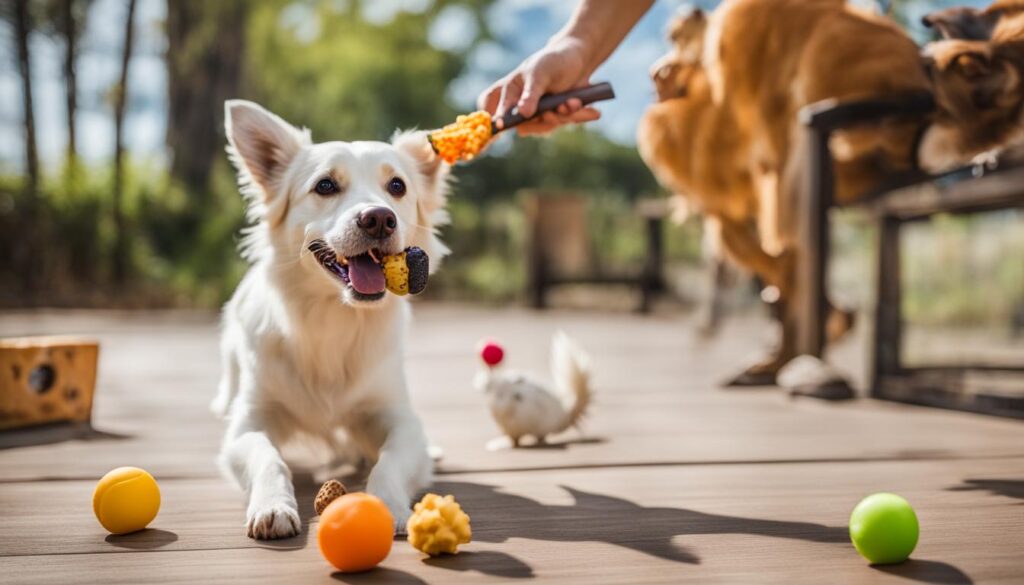
Conclusion
Chocolate can be a tempting treat for us humans, but it poses serious risks to our furry friends. Dogs cannot metabolize theobromine and caffeine, which are present in chocolate, as effectively as we can. This makes chocolate toxic to dogs and can lead to chocolate poisoning.
The severity of symptoms depends on the amount and type of chocolate ingested. Darker and more bitter chocolates are more dangerous, while white chocolate contains minimal theobromine. It is crucial to be aware of the signs of chocolate poisoning, which include vomiting, diarrhea, increased thirst, panting, and racing heart rate. In severe cases, dogs may experience muscle tremors, seizures, and heart failure.
If you suspect that your dog has ingested a poisonous amount of chocolate, it is important to seek immediate veterinary treatment. The sooner your furry friend receives the appropriate care, the better their chances of a full recovery. In the future, it is essential to take preventive measures to keep chocolate out of your dog’s reach. Remember, a little indulgence for us can be a dangerous temptation for them. Stay vigilant, keep your pup safe, and enjoy treats that are dog-friendly.
FAQ
Can dogs eat chocolate?
No, chocolate is toxic to dogs due to the presence of theobromine and caffeine, which dogs cannot metabolize as well as humans.
What are the risks of chocolate toxicity in dogs?
Theobromine in chocolate can cause symptoms such as vomiting, diarrhea, increased thirst, panting, excessive urination, racing heart rate, muscle tremors, seizures, and even heart failure in severe cases.
How much chocolate is poisonous to a dog?
The amount of toxic theobromine in chocolate varies with the type. Baking chocolate and dark chocolate have the highest concentrations, while milk chocolate has lower levels. Even small amounts of baking chocolate can be toxic to dogs, while small amounts of milk chocolate are generally not harmful.
What are the clinical signs of chocolate poisoning in dogs?
Common symptoms include vomiting, diarrhea, increased thirst, panting or restlessness, excessive urination, racing heart rate, muscle tremors, seizures, and heart failure in severe cases.
What is the emergency treatment for chocolate ingestion in dogs?
If caught early, decontamination methods such as inducing vomiting and administering activated charcoal may be sufficient. Supportive treatments such as intravenous fluid therapy and medication to manage symptoms may be necessary in severe cases.
Are there any dog-safe chocolate alternatives?
Carob can be used as a chocolate substitute in dog treats, as it contains very little theobromine. Some specialty dog bakeries may use small amounts of milk chocolate in treats, which can be safe for most dogs due to the low theobromine content.
What are some prevention and safety tips to avoid chocolate toxicity in dogs?
To prevent chocolate toxicity, keep all chocolate products out of your dog’s reach, store chocolate treats in tightly closed containers, and be cautious when consuming chocolate around dogs. It is crucial to educate yourself and others about the dangers of chocolate for dogs.
How can I ensure the safety of my dog when it comes to chocolate?
Keep chocolate out of your dog’s reach, store chocolate treats securely, and be aware of the risks associated with chocolate consumption. If you suspect that your dog has ingested chocolate, contact a veterinarian or pet poison helpline for guidance.

